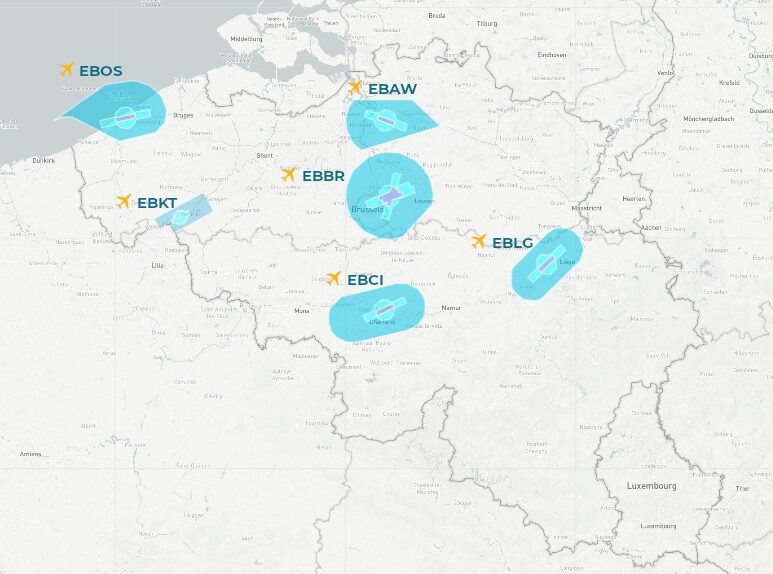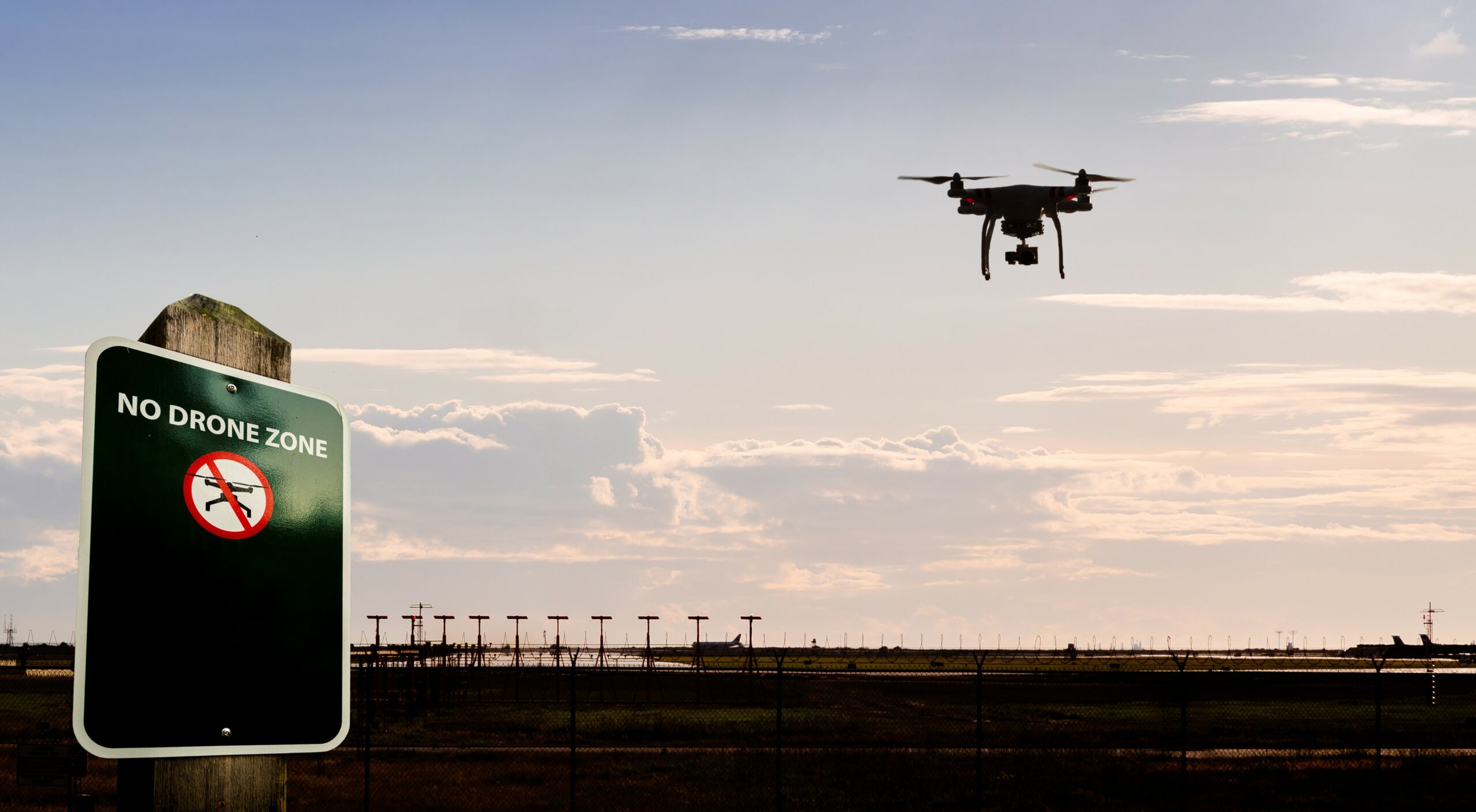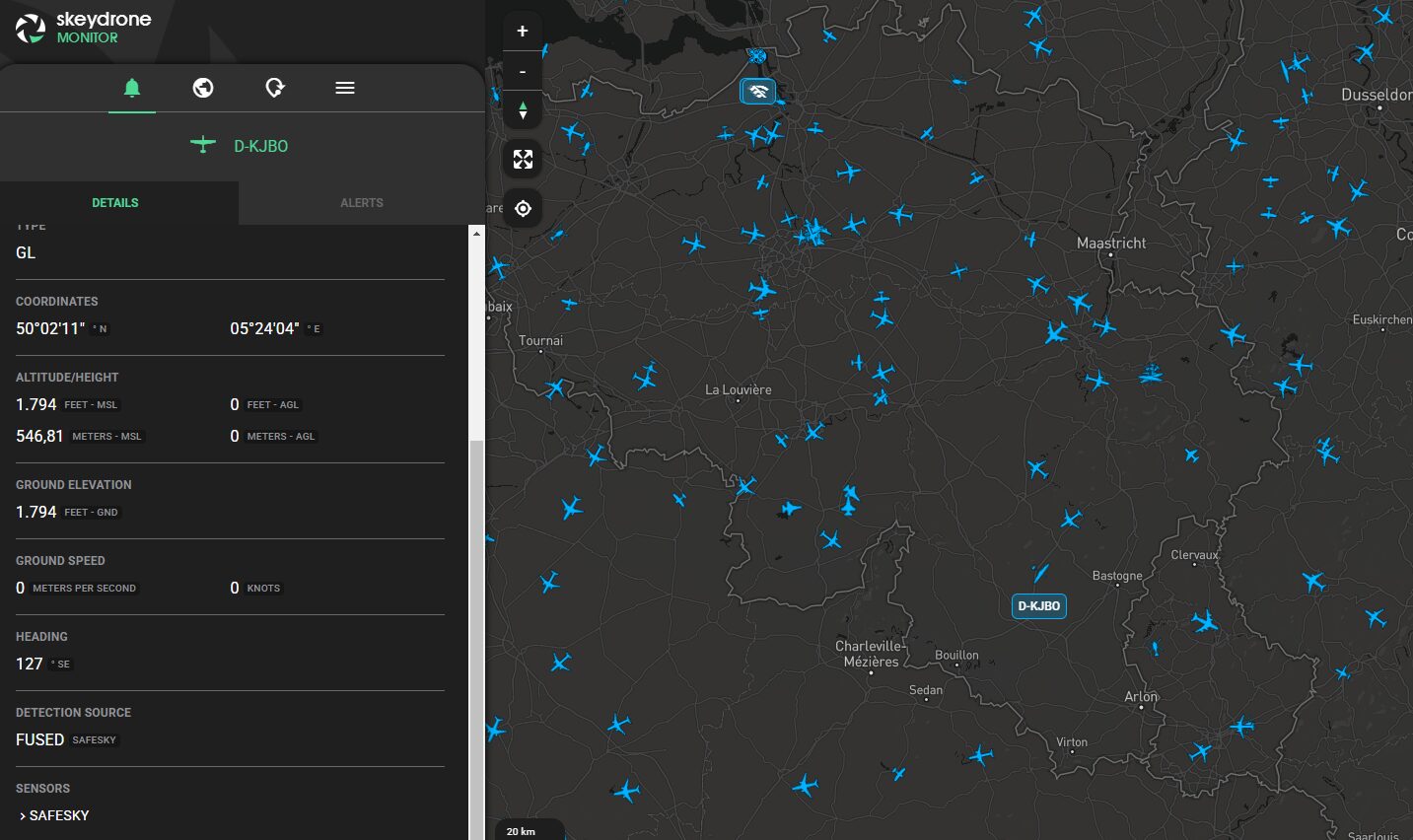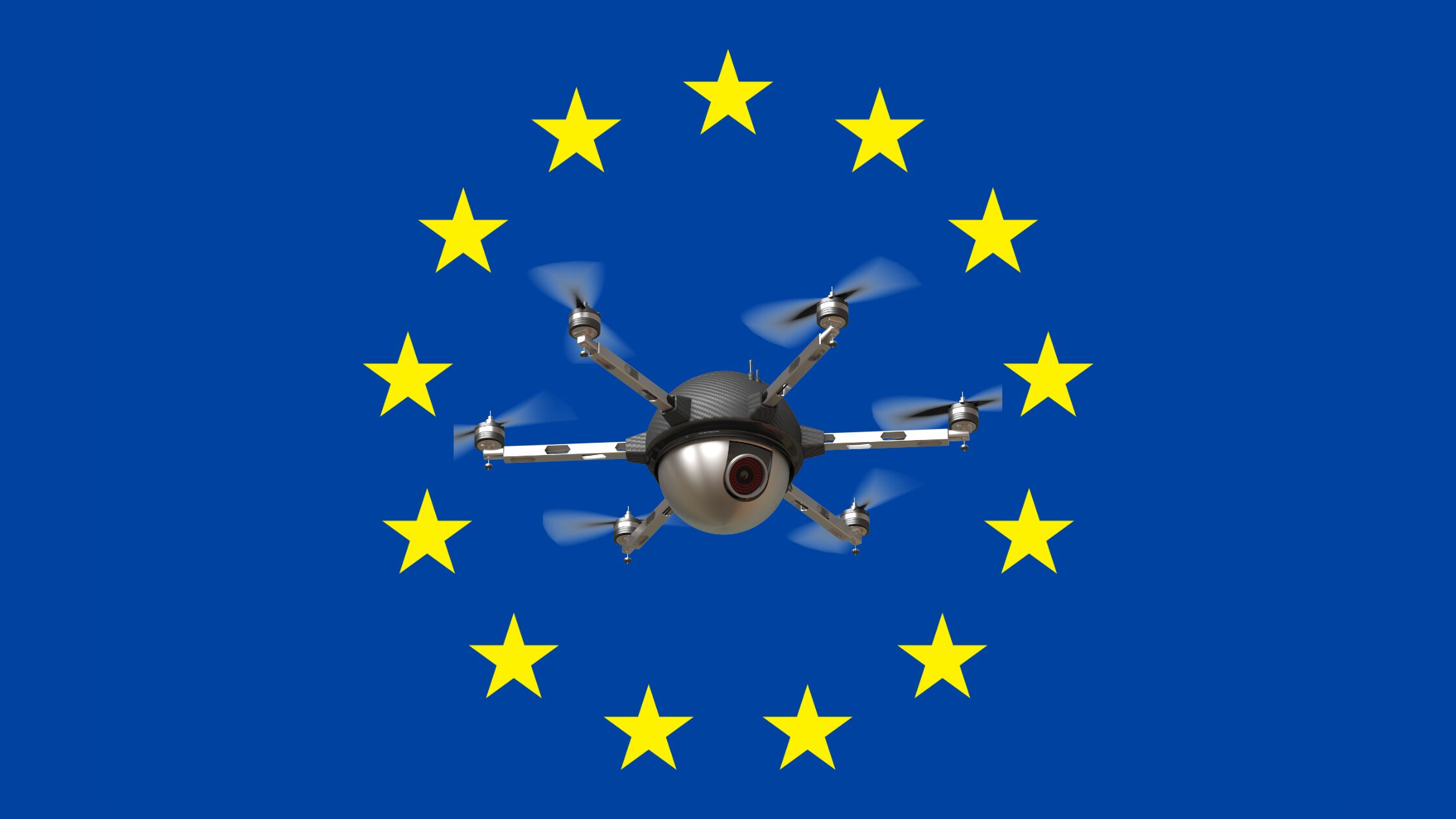Today, as part of a nationwide strike led by unions, no flights will take off or land in Belgium between 06:45 and 22:15. With all flights grounded at major airports, drone operators might wonder if this could be the perfect chance to fly a drone in airport areas—whether for fun or to inspect assets. After all, if no aircraft are flying, it should be safe to operate a drone, right?
That assumption might seem logical at first sight, but let’s take a closer look at the regulations.
Legislation and geozones
Drone flight restrictions around major Belgian airports are determined by predefined geozones. Each geozone consists of multiple subzones, called Very Low Level airspace (VLL), categorized based on their proximity to the airport and the associated risk level for crewed aviation:
- VLL0: Over and close to the actual runways
- VLL1: Above and near the airport perimeter
- VLL2: Further away from the airport but still within controlled airspace

A common misconception is that if flights are grounded, these geozones become irrelevant. However, that’s not the case. The activation of these zones is not based on whether air traffic controllers are present or whether flights are operating.
To determine the exact activation conditions for these geozones, we must refer to the Ministerial Decree governing geozones. The activation differs per specific subzone:
- The entire geozone of Kortrijk-Wevelgem International Airport and the VLL0 subzones of all other airports are permanently active, regardless of whether the airport is operational or air traffic controllers are working.
- The activation of all VLL1 and VLL2 subzones is directly linked to the published lower airspace associated with the airport, i.e. the Control Zone (CTR). According to the Belgian Aeronautical Information Publication (AIP), while activation conditions vary slightly by airport, the key takeaway is clear: geozones are never deactivated based on air traffic control service levels, and most are permanently active.
Conclusion
Even in exceptional cases like an airport shutdown, drone operators must adhere to the same regulations. Airport geozones remain active, and all flight restrictions continue to apply.
This means drone pilots must still request flight authorization via the Drones & Aerial Activities platform.
Stay informed, fly responsibly, and always check the regulations before taking off!




